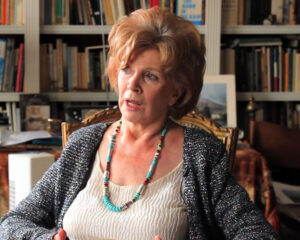Celebrities can often shine a light on a personal, or social, problem, and bring more focus to a troubling issue. And this, it seems, is what Meghan, Duchess of Sussex, intends when she speaks about suicide.
She has been publicly reflecting on her own experience of having suicidal thoughts when she was expecting her first child, Archie (during her time enfolded within the strictures of the British royal family). She told a TV interviewer on CBS that she wanted to be open about her experience so as to offer “healing” to those having similarly dark thoughts.
Encourage
“I would never want someone else to feel that way….If me voicing what I have overcome will save someone, or encourage someone in their life to really genuinely check in on them and not assume that the appearance is good, so everything’s okay, then it’s worth it.” Meghan and Harry are involved in a supportive organisation called The Parents’ Network, for those who have suffered loss.
Almost simultaneously, a study has emerged from Trinity College Dublin, headed by Dr Ronnie O’Toole, suggesting that suicide in Ireland is probably 25% higher than recorded. Like Duchess Meghan, he wants a more open conversation about suicide, because “we are underestimating one of the leading causes of death…among men in particular.” Suicide has risen from 2 to 2.5 per 100,000 people.
Ronnie O’Toole regrets that there is still a stigma associated with suicide – though, ‘hopefully that is diminishing’. But that’s tricky terrain as well”
Under Irish law, a suicide verdict must be “beyond reasonable doubt”, which means a degree of certainty. In other jurisdictions, suicide may be pronounced “on balance of probabilities”.
I have indeed wondered if some of the single-vehicle car crashes, where no one else was involved, might involve a suicide.
Making suicide more easily labelled, however, can be tricky. I know of several cases – not just in Ireland – where the bereaved family did not want a verdict of suicide, preferring the ambiguity of uncertainty. They wanted to cling to the hope that an overdose had been a mistake, or the accident a mishap, because those bereaved by suicide can feel their loved one rejected them.
Deterrent
Ronnie O’Toole regrets that there is still a stigma associated with suicide – though, “hopefully that is diminishing”. But that’s tricky terrain as well. If we want to reduce suicide, there has to be some deterrent or discouragement. The huge decrease in cigarette smoking has been achieved by depicting cigarettes as negative, unhealthy, even loathsome. Reducing suicide would also involve underlining its negativity, and awful impact on others.
Duchess Meghan and Dr O’Toole are right to emphasise the open conversation needed around this painful subject. But reducing the statistics, or even amending the verdicts, may prove much more challenging.
Irish priests and the diaspora

A propos Edna O’Brien, whose death has been widely marked, one of the most striking short stories she wrote was called ‘Shovel Kings’ (in the collection The Love Object). It is almost an exercise in reportage, plainly chronicling the life and hard times of an Irish labourer , and his ilk, working in the building industry in London and other English cities in the 1950s and 60s. These men reconstructed so much of England after the devastation of the Second World War, and their lives were often tough and insecure.
Edna alludes to the “big, white chapel” the labourer would attend, “where the Irish priest gave thunderous sermons on a Sunday.” I’m sure there were a few thunderous sermons, but there’s another side to this story too. Brian Harvey, a noted historical archivist, has been researching the scores of Irish priests who looked after Irish emigrants during these decades. They set up entertainments, organised ballad sessions, and other social events for lonely emigrants. They acted as welfare personnel as well as chaplains in hospitals, prisons and psychiatric units. They helped with housing and social benefits. Most were associated with the Oblate order.
A measure of the service Irish emigrant priests gave is indicated by the number of Masses said at the popular Kilburn Church of the Sacred Heart in Quex Road in the mid-1950s. 13 Masses each Sunday, attracting 13,000 Irish parishioners.
Hopefully, Brian Harvey will publish his account of the Irish priests who looked after emigrants at a time when the state showed no interest whatsoever in the diaspora.
***
Summer being a time of lighter attire (though much depends on the clemency of the weather), there has been some discussion on social media about suitable and unsuitable dressing for attendance at Mass. Does it matter? I’m not sure, even though those worshippers in the flimsiest apparel – shorts, tee-shirts, spaghetti-strap sundresses – make themselves more noticeable.
But then, back in former days, much attention was paid to who was wearing a fetching hat at Easter, or who was appearing in a new ensemble on a special occasion. In my Dublin childhood, Catholics and Protestants even vied for fashionable competitiveness as they prepared to appear in ‘Sunday best’.


 Mary Kenny
Mary Kenny Meghan, Duchess of Sussex. Photo: Fuzheado
Meghan, Duchess of Sussex. Photo: Fuzheado